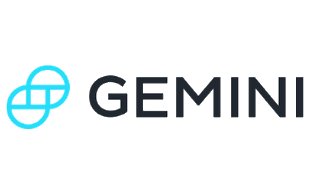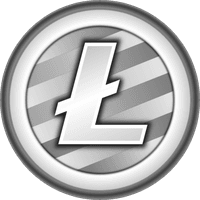Gemini Cryptocurrency Exchange

- Buy, sell and trade 80 cryptos.
- Platform designed for traders of all experience levels
- Get $25 in Bitcoin when you trade $100 with code Finder25
Gemini Cryptocurrency Exchange

While bitcoin may be the best-known crypto, that doesn’t necessarily mean it’s the best. There are many other currencies with similar and even superior features to bitcoin, so let’s take a closer look at 10 leading bitcoin alternatives.
Disclaimer: This page is not financial advice or an endorsement of digital assets, providers or services. Digital assets are volatile and risky, and past performance is no guarantee of future results. Potential regulations or policies can affect their availability and services provided. Talk with a financial professional before making a decision. Finder or the author may own cryptocurrency discussed on this page.
Are you visiting from outside the US?

Created as “the silver to bitcoin’s gold” by Google programmer Charlie Lee, Litecoin was launched in October 2011. Though also a peer-to-peer payment currency, Litecoin was designed to offer a few key benefits over bitcoin including reduced transaction fees and faster payment processing.
Litecoin was actually one of the first forks of bitcoin, and through the use of a different mining algorithm (Scrypt instead of SHA-256) was designed to be accessible to a wider range of miners. The aim was to avoid the mining centralization plaguing bitcoin, but the subsequent development of sophisticated mining technology targeting the Scrypt algorithm has since put Litecoin mining well beyond the reach of everyday PC users.
That said, Litecoin’s faster processing times and lower fees make it more useful for everyday transactions than bitcoin. However, it can’t match bitcoin as a store of value and will probably never be able to achieve the same iconic status and mainstream recognition that the world’s first digital currency enjoys.
How to buy Litecoin Learn more about Litecoin

Built with the aim of offering instant, reliable and affordable international payments, Ripple provides a global settlement network designed to transform cross-border transactions.
The current infrastructure for global payments is dated. Not only do transactions take days to complete, but exchange rates and fees charged by banks and other middlemen mean that sending money overseas is an expensive process.
Ripple’s global network, known as RippleNet, is designed to connect the different payment networks of banks, payment providers, digital asset exchanges and corporate institutions to provide more efficient transactions.
XRP is the digital currency used to facilitate transactions on RippleNet. Unlike bitcoin and several other coins in this list, Ripple’s consensus mechanism doesn’t support mining. However, it does allow payments to be settled in less than 5 seconds for a minimum transaction cost of 0.00001 XRP. While bitcoin’s network tops out at around 7 transactions per second, Ripple’s network can handle 1,500 transactions per second.

Despite its position at the top of the cryptocurrency tree, bitcoin has its shortcomings – as more people use it, the more its network struggles to keep up, resulting in transactions that are slow and expensive. Throughout 2017, there was heated debate amongst the bitcoin community about how to best overcome this problem, with some wanting to increase the size of blocks in the blockchain and others keen to keep the existing block size and restructure how data is stored within those blocks.
Unable to reach consensus, the minority that wanted to increase the size of blocks hard forked away from the bitcoin blockchain on August 1, 2017, creating Bitcoin Cash. This new currency offers an 8MB block size compared to bitcoin’s 1MB, with transactions confirmed in minutes and for a much lower cost than bitcoin transfers.
Though many in the crypto community remain sceptical of this and all other hard forks, Bitcoin Cash has since cemented its position among the top five cryptocurrencies by market cap. While it’s nowhere near as well-known or esteemed as its bigger brother, it’s much more useful for day-to-day transactions.

If you value your privacy when transacting online, Monero is designed with you in mind. Launched in April 2014, this peer-to-peer currency is designed to provide anonymous and untraceable transactions.
Through the use of several privacy-focused technologies, Monero allows holders to send and receive funds without the origin, amount or destination of a transaction visible to anyone else. Meanwhile, although bitcoin is commonly perceived as allowing private transactions, it’s possible for payments sent through the bitcoin network to be de-anonymized.
This means that while individual bitcoins can be tainted through their association with previous transactions, for example, if they were stolen from an exchange, each XMR is essentially the same as the next.
Another key difference between Bitcoin and Monero is that while the former is battling mining centralization, Monero’s CryptoNight algorithm is designed to suit mining by ordinary CPUs and GPUs. In fact, Monero was even hard forked in April 2018 to prevent expensive ASIC machines from mining the network.
How to buy Monero Learn more about Monero

Another privacy-focused coin, Zcash uses zero-knowledge cryptography to allow anonymous transactions. Initially released in October 2016, Zcash can trace its origins back to a project called ZeroCoin, which was actually originally designed to improve anonymity for bitcoin users.
A fork of bitcoin, Zcash extends the bitcoin protocol to let users choose between sending “transparent” and “shielded” transactions. If you choose the shielded option, the sender, amount and recipient of a transaction are all hidden.
Just like bitcoin, Zcash has a maximum supply of 21 million coins. It’s also a proof-of-work cryptocurrency that can be mined, although its Equihash algorithm is designed to provide resistance to ASIC mining technology.
How to buy Zcash Learn more about Zcash

Another currency created from a fork of bitcoin, Dash is short for Digital Cash. As you might expect with a name like that, this coin is designed to offer fast and reliable digital payments.
In fact, the aim of Dash’s creator, Evan Duffield, was to address a few of bitcoin’s key shortcomings (lack of privacy, slow transaction speeds and community governance) and make cryptocurrency more practical and suitable for everyday use.
Using Dash’s InstantSend feature, you can send funds to another Dash wallet holder and have your transaction confirmed in less than a second. Dash also offers the optional PrivateSend feature, which allows you to keep your transaction history and balance hidden from prying eyes.
Dash is also self-funded and self-governed, with anyone able to propose new features and changes to the network, and each proposal voted on by Dash masternodes.
Finally, rather than using a single mining algorithm, Dash features a combination of 11 mining algorithms known as X11 that’s designed to ensure that coins are more fairly distributed amongst miners.
How to buy Dash Learn more about Dash

Originally known as RaiBlocks, Nano (NANO) is another peer-to-peer transactional currency designed to improve on some of bitcoin’s downfalls. Launched in 2017, Nano aims to offer real-time, zero-fee transactions without requiring the same astronomical power consumption as bitcoin.
To achieve this, it uses a combination of blockchain (used by bitcoin and the majority of other cryptocurrencies) and directed acyclic graph technology (DAG, known to be used by IOTA). This “block-lattice” infrastructure is designed to bring together the security benefits of blockchain with the advantages for network scaling that DAG offers.
As far as practicality for everyday use, Nano offers a number of advantages over bitcoin. However, whether or not it can ever achieve the same level of widespread acceptance and support that bitcoin does remains uncertain.

Released in July 2012, Bytecoin is yet another cryptocurrency that aims to tackle bitcoin’s lack of privacy. Based on the CryptoNote protocol, Bytecoin is a peer-to-peer currency that offers anonymous transactions by obfuscating the senders and recipients of transactions. Interestingly, Monero (which is also featured in this list) was a fork of Bytecoin.
Using the Egalitarian proof-of-work algorithm, Bytecoin is designed to be easier to mine with CPUs and GPUs than bitcoin. Its price also remained relatively stagnant for several years until 2017, when the growth of cryptocurrencies and an increasing demand for privacy coins resulted in substantial price fluctuations.
Back to top
Like Bitcoin Cash, Bitcoin Gold was created as the result of a bitcoin hard fork. With a plan to “make bitcoin decentralized again”, the fork occurred in October 2017.
With the vast majority of bitcoin mining concentrated among a select number of mining companies with significant financial resources, the team behind Bitcoin Gold argue that this goes against one of the key principles of cryptocurrency: decentralization.
To overcome this problem and create a network where users can mine using only basic hardware, they changed to the ASIC mining-resistant Equihash algorithm. There are also plans to introduce BTG private transactions in 2019.
How to buy Bitcoin Gold Learn more about Bitcoin Gold

On the face of it, Ethereum is a completely different type of cryptocurrency to bitcoin, but we’ve included it here simply because it’s the world’s second-biggest cryptocurrency and probably second only to bitcoin in terms of mainstream recognition. If you’re considering buying a major, well-established cryptocurrency, it’s well worth comparing the pros and cons of Ethereum with those of bitcoin.
Launched in July 2015, Ethereum is a decentralized platform where developers can create and deploy smart contracts and decentralized applications (dapps). Its native currency, ether (ETH), is used to pay transaction fees and power applications on the Ethereum platform.
Like bitcoin, Ethereum’s sharp rise in popularity has seen it encounter a range of scaling issues. However, with work currently underway to help Ethereum scale to cope with increased demand, it looks set to remain bitcoin’s number-one competitor for some time to come.
How to buy Ethereum Learn more about Ethereum
This is just a small selection of the currencies with similar features and strengths to bitcoin. In fact, there are hundreds of other altcoins that are competitors for bitcoin, so check out our altcoins guide for more details on what each of those currencies has to offer.
Disclosure: At the time of this writing, the author holds ADA, ICX, IOTA and XLM.
Whether products shown are available to you is subject to individual provider sole approval and discretion in accordance with the eligibility criteria and T&Cs on the provider website.
The US government is already one of the biggest bitcoin holders in the world and could be about to buy more under the Trump administration.
Learn how to buy Bitcoin in Colombia and the top exchanges available in the country.
Learn how to buy bitcoin on eToro and how to manage your crypto after your purchase.
Learn how to buy Bitcoin exchanges in our step-by-step guide.
Venmo offers a quick and easy way to buy Bitcoin (BTC) and other major cryptocurrencies.
Here are a 12 legitimate ways to earn free Bitcoin. See which methods interest you, find out how to get started and grow your digital wallet.
Finding the right way to sell Bitcoin is just as important as finding the right option to buy it. In this guide, we break down the options available and the factors to consider.
Want to buy bitcoin or any other cryptocurrency with PayPal but don’t know how? Find all the information you need in this handy guide.
A round-up of the most common crypto scams and how to detect and avoid them.
Learn how to buy Bitcoin in the US with our simple step-by-step guide and tips on what to know before you get started.